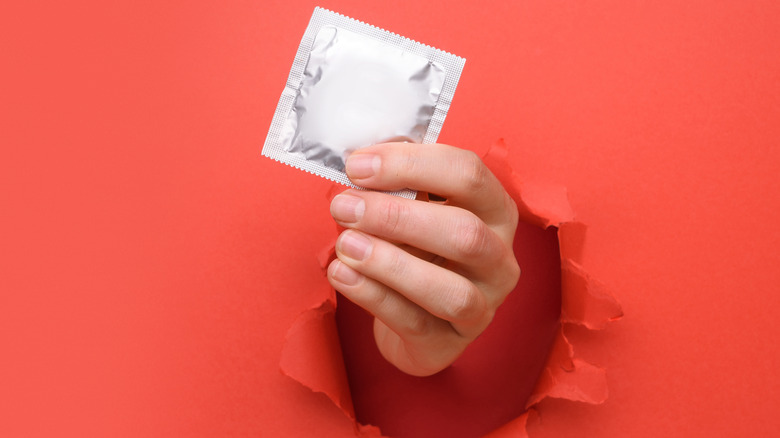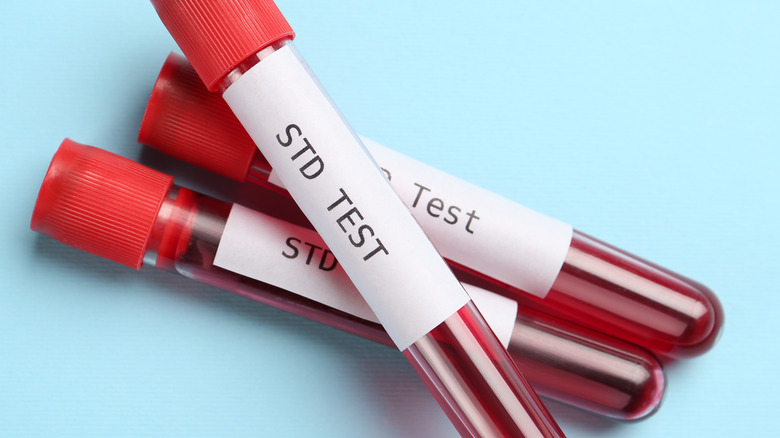What Every Sexually Active Person Should Know About Preventing STDs
The saying goes, "sex is like pizza; even if it's bad, it's still good." While the jury is still out on whether it's actually still good when it's done bad — because pizza can be bad sometimes — it's this mentality that keeps people looking for sex, wanting sex, and getting sex. It is, after all, good for you in many ways. Menstrual cramps? There's some sex for that. Migraine ruining your day? Let an orgasm chase that bad boy away.
But while sex can be fantastic, loads of fun, and healthy for you, being a sexually active person requires a lot of responsibility. You can't just go around having sex with whomever you want without taking the proper precautions.
According to the Centers for Disease Control and Prevention (CDC), STIs have been on the rise. Although there was a brief drop in numbers during the beginning of the COVID-19 pandemic, they were up again by the end of 2020, surpassing the numbers of 2019. Gonorrhea and syphilis saw an increase of 10% and 7%, respectively. Reports of chlamydia saw a 13% decline from 2019 to 2020, but experts believe that decline has to do with less screening rather than an actual drop in cases.
"There were moments in 2020 when it felt like the world was standing still, but STDs weren't," said the Director of CDC's National Center for HIV, Viral Hepatitis, STD, and TB Prevention, Dr. Jonathan Mermin. "The unrelenting momentum of the STD epidemic continued even as STD prevention services were disrupted."
In a world of so many STIs, how can someone prevent infection? For starters, condoms.
Condoms, condoms, condoms
While the CDC has abstinence at the top of their list of ways to prevent getting or giving an STD, that's not a desirable approach for many, so let's jump to condoms, shall we?
Condoms are 98% effective when used correctly in preventing pregnancy and reducing the chance of STI transmission (per Healthline). Using a condom correctly means only using ones that haven't expired and have been stored properly — ideally in the box in a drawer — and being sure to put them on properly. Also, you want to stick to latex condoms. Natural condoms, which are usually made of lamb skin, do not protect against the transmission of STDs.
But unfortunately, condoms do not completely prevent every STI! Infections that can be spread via the skin, like HPV (human papillomavirus), herpes, syphilis, and trichomoniasis can be transmitted even if you use a condom — although the risk is lower.
That's where another important aspect of preventing STIs comes in: talk to your partners about STI status honestly and often. If you can't have an open and candid conversation about STIs without your partners, then you may want to look at your relationship with sex and ask yourself, "why?" If you're going to be sexually active, you should be able to talk about the possible downsides that come with it — not just for yourself, but everyone you sleep with.
Get vaccinated and get tested
Fun fact: the most common STI has a vaccine. With 42 million people living in the US currently infected and roughly 13 million new infections every year, HPV is, hands down, the most common STI according to the CDC. But it can be prevented by getting vaxxed.
The HPV vaccination is recommended for boys and girls as young as 11 years of age, up through age 26. Although US health officials have expanded eligibility to age 45, its effectiveness isn't what it would be in those 26 and younger. HPV can result in genital warts and certain types of cancer.
In addition to getting vaccinated, getting regular STI screenings is important. STIs can often present with no symptoms, but that doesn't mean they won't cause problems in the future. The CDC recommends that people in high-risk groups get tested yearly for syphilis, gonorrhea, chlamydia, and HIV, while those who have a very active sex life with multiple partners should be tested every three to six months. When it comes to gonorrhea and chlamydia, all sexually active women under the age of 25 are considered high risk, and should be tested yearly.
Preventing STDs is easy if you know how to do it and care enough to actually do it. Although abstinence is the only way to completely avoid getting or transmitting an STI, if you're sexually active, you do have methods to limit your chances of giving or getting an infection or disease, so use them.


